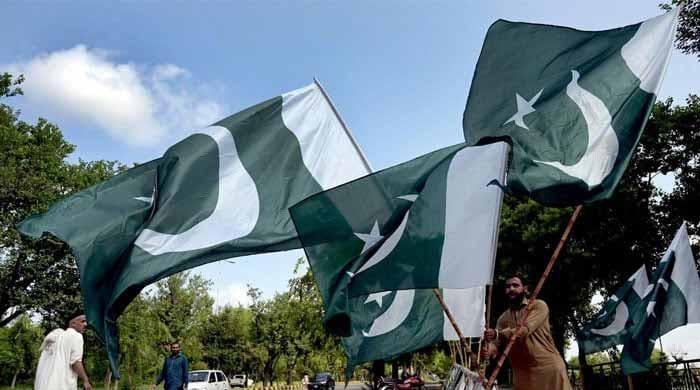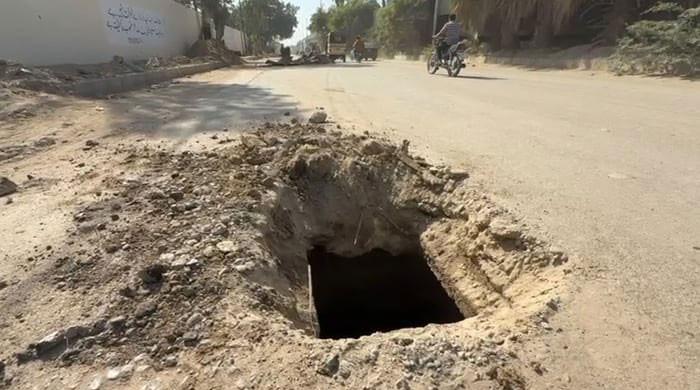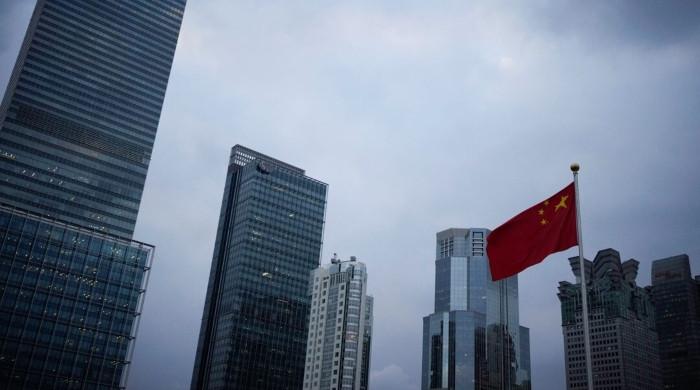A COP30 agenda for Pakistan
Islamabad should argue for pre-arranged triggers that release support when certain thresholds are breached
November 19, 2025

Pakistan's narrative at COP30 should begin with a simple premise that is both moral and practical: countries that contributed least to the crisis must not be asked to finance their survival with debt.
The monsoon that now swings between drought and deluge is no longer an anomaly. It is the new operating condition of our society and economy.
When villages are inundated, when crops fail and when heat shuts schools and factories, the costs land first on families and local governments and then reverberate through national budgets.
That cycle is not a request for charity rather a bill for damages that have accumulated over decades and are now arriving with interest.
So, Pakistan should set out four clear asks that convert ambition into delivery on the ground and turn promises into protection for people in harm’s way. These asks are framed to be implementable, measurable and aligned with equity and common but differentiated responsibilities.
One, climate finance for the most vulnerable must be provided primarily as grants or on highly concessional terms, and it must not be conditioned on debt accumulation or austerity.
This is the practical meaning of reparations in a climate context. Public finance for adaptation, resilience and loss and damage should have a clear grant majority. Any lending should be limited to projects with credible revenue streams that can repay without crowding out health, education or social protection.
A cap on the loan share of public climate finance, annual reporting in grant-equivalent terms and the wider use of climate-resilient debt clauses that pause repayments after disasters would align incentives with reality.
When the international system chooses loans over grants for floodplains and heat-exposed cities, it is not financing climate action but exporting climate risk into national balance sheets.
Two, the New Collective Quantified Goal must move from a headline to a timetable and from a number to a pathway that reaches subnational institutions. At COP29, governments agreed a New Collective Quantified Goal (NCQG) to mobilise at least $300 billion per year by 2035 for developing countries, with a broader aim of catalysing $1.3 trillion annually from all sources by 2035.
At COP30, Pakistan should call for an agreed schedule that scales up annual flows with clear checkpoints, for a transparent ledger that distinguishes genuinely new resources from repackaged aid and for independent reconciliation of reported amounts and grant equivalence each year.
The test of this new goal should not be press releases but rather the rate at which funds reach provincial departments, city governments, water utilities, disaster management authorities and community organisations.
To make this real, parties should endorse rapid-access windows that can disburse directly to subnational entities, using standardised fiduciary templates and public dashboards that trace every rupee from approval to implementation.
Within this goal, at least half of public climate finance should be dedicated to adaptation. Three, the Fund for Responding to Loss and Damage must operate with the speed and reliability of an emergency service rather than the pace of a ceremonial pledge.
Although during the first week at COP30 the Fund’s Board suggested operational readiness in principle, the details remain largely unresolved. Pakistan should argue for a predictable replenishment schedule, a country window that supports locally led projects and pre-arranged triggers that release support when rainfall, river flow, heat, or cyclone thresholds are breached based on climate risk vulnerability assessments.
Parametric mechanisms can pay out within days for early recovery and social protection, while a parallel window supports medium-term reconstruction and risk reduction so that communities do not rebuild vulnerability. The insurance and private capital can also complement this work, but they cannot replace the public responsibility of those with the greatest historical and current emissions.
Four, climate risk should be recognised as a traditional security threat that warrants rapid international assistance to protect critical systems and social stability. At COP30, discussions in the first week also brought renewed attention to climate-related security risks, a theme that is particularly salient for Pakistan given its geography and regional dynamics.
Multiple interventions from global and regional actors emphasised that climate risks are beginning to destabilise food systems, migration patterns and cross-border relations worldwide.
Pakistan's case is shaped by the hard geography of shared rivers, shared air and shared risk with its neighbouring country India. The Indus Basin is governed by a long-standing treaty that reduced the risk of catastrophic miscalculation, yet disputes, data gaps and mistrust around seasonal flows and reservoir operations persist.
In heavy monsoon years, uncoordinated releases compounded downstream flooding in Pakistan which resulted in deluge and affected 4-5 million people. Likewise, Punjab in Pakistan and India spans a single airshed When crop-residue burning, transport emissions and industrial pollution surge without adequate control measures on any side, smog intensifies on both sides and pushes hospitals to their limits.
Pakistan should therefore press for a climate-security assistance protocol that is cooperative by design: treaty-consistent, time-stamped and independently verifiable data sharing on reservoir levels and release schedules; joint stress-tests for flood corridors; and pre-cleared emergency channels for equipment, fuel and engineering support when thresholds are crossed.
In parallel, a clean-air diplomacy track should synchronise seasonal restrictions, accelerate residue-management technology and deploy compatible monitoring so each side’s actions are visible, comparable and accountable. The objective is to prevent environmental indicators from becoming instruments of pressure or suspicion; the way to do that is through verifiable cooperation.
To ensure these asks translate into results, Pakistan should table an accountability mechanism that binds pledges to delivery. After the 2022 floods, the Geneva conference produced pledges of $10.98 billion for Pakistan, but only about 5.0% took the form of grants, the remainder being loans, and by June 2025 just 27 per cent had actually been disbursed. The gap between podium numbers and money on the ground cannot persist.
COP30 should therefore establish a pledge-to-impact regime with three pillars. First, a legally anchored registry tracks every commitment in grant-equivalent terms, with quarterly milestones and automatic reclassification of undisbursed sums as "at risk".
Second, a compliance and delivery review compares pledged timelines to actual transfers and project start dates; chronic under-delivery triggers make-good obligations, such as topping up the Loss and Damage window, buying down interest on existing climate loans to grant equivalence, or paying modest non-delivery fees into a pooled facility.
Third, all contributors and intermediaries publish machine-readable, recipient-level data so civil society, parliaments and auditors can verify flows. A simple metric, the Pledge-to-Impact Ratio, should be reported annually for each contributor and for each fund: how much was pledged, how much arrived, how fast it arrived and what it achieved.
The new goal should include a distribution rule that prioritises high-vulnerability regions in South Asia, small island states and least developed countries. The contributors and intermediaries should publish subnational distributions within recipient countries so funds do not cluster in capitals or in projects that are easy to finance but marginal to risk reduction.
In Pakistan, that means resources must reach delta districts at sea level, peri-urban settlements along hill torrents, and glacier-affected valleys where hazards are compounding. Finance that arrives in Islamabad but not in Rajanpur, Dadu or Charsadda is climate finance in name more than in effect.
These international responsibilities do not absolve Pakistan of action at home. A credible narrative at COP30 must be paired with visible domestic delivery: a consolidated and costed investment pipeline aligned with the NDCs & National Adaptation Plan; provincial procurement and monitoring templates ready for use; early-warning systems that reach the last mile; urban plans that unlock nature-based buffers; heat-health protocols that protect outdoor workers and the elderly; and targeted credit and extension for climate-smart agriculture.
Ultimately, the first week of COP30 reaffirmed that the real measure of climate finance is not the volume of pledges but the experience of people at the frontline. The argument should return to people rather than process.
Pakistan's four asks at COP30 aim to make these outcomes routine rather than rare: debt-free finance for the most vulnerable; a credible, accountable path to the new global goal that reaches provinces and cities; a loss and damage fund that pays like a service rather than a ceremony; and recognition of climate risk as a security threat that commands rapid, cooperative assistance across borders.
If the world can agree on those points and be held to them, climate justice will begin to feel like justice. If it cannot, solidarity will be rehearsed while the most exposed face the next season alone.
The writer is an environmental scientist and leads the ecological sustainability and circular economy programme at the Sustainable Development Policy Institute (SDPI), Islamabad. She is also a member of the Punjab Climate Change Committee.
Disclaimer: The viewpoints expressed in this piece are the writer's own and don't necessarily reflect Geo.tv's editorial policy.
Originally published in The News









